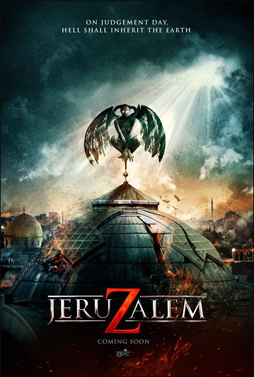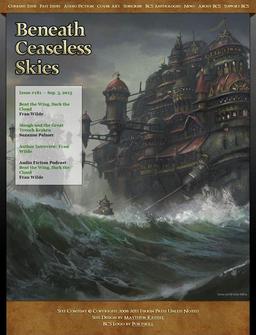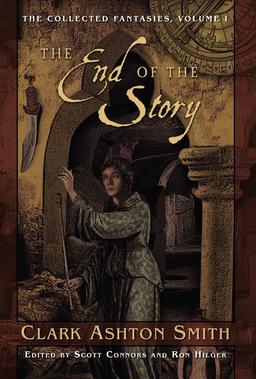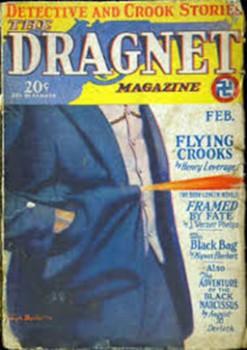For Gonji Lovers: A Hungering of Wolves by T.C. Rypel
 I’ve finally read A Hungering of Wolves, the last published volume of T.C. Rypel’s dimension-spanning swords & sorcery epic series about Gonji, the half Japanese, half Norwegian samurai, fighting his way across Renaissance Europe in hopes of discovering his destiny. It shouldn’t be the last book, but as of now, sadly, it is. While there is a collection of shorter tales scheduled for the near future, the sequel to this book is not.
I’ve finally read A Hungering of Wolves, the last published volume of T.C. Rypel’s dimension-spanning swords & sorcery epic series about Gonji, the half Japanese, half Norwegian samurai, fighting his way across Renaissance Europe in hopes of discovering his destiny. It shouldn’t be the last book, but as of now, sadly, it is. While there is a collection of shorter tales scheduled for the near future, the sequel to this book is not.
It was orginally published as Knights of Wonder by Zebra Books way back in 1986. Rypel and his books fell victim to the whims of the publishing industry and an agent who wasn’t a big heroic fantasy fan. My earlier review of the first three Gonji books, collectively called the The Deathwind Trilogy, contains a more detailed account of Gonji’s publishing history.
I tend to avoid series that haven’t been finished because I fear they never will be. My dad went to his grave never seeing the end of Roland Green’s Wandor series. I dread the screams that will pierce the heavens if A Song of Ice and Fire doesn’t reach its end. So when I tell you that I read A Hungering of Wolves knowing it sets up a story that remains unfinished, that should tell you something about how much I like Rypel’s books.
If you have any love for swords & sorcery then you should read the Gonji books. Though thirty years old, Rypel’s books don’t feel dated and avoid the cliches that infect the worst heroic fantasy. Gonji, his associates, and opponents react like real humans, not puppet characters moved about in service to some pre-ordained plot.
While the books have more blood and thunder than even I can handle at times, they also have detailed and nuanced character development contemporary readers expect. For every loud and explosive scene the books have calmer moments that create atmosphere and a believable world. Just enough time is spent with secondary characters to make you care when something happens to them or buy their motives when they act.
 With my Fantasia coverage done for another year, I thought I’d write a final post looking back over what I saw to try to make sense of it all. And to talk about why I’ve done what I’ve done.
With my Fantasia coverage done for another year, I thought I’d write a final post looking back over what I saw to try to make sense of it all. And to talk about why I’ve done what I’ve done.




 Concluding my discussion of films I saw courtesy of the Fantasia screening room, I’ll be writing today about three movies: a drama with elements of horror called They Look Like People, the horror-comedy called Nina Forever, and one of the purest horror movies I’ve ever seen, Nathan Ambrosioni’s Hostile. I’ll begin with They Look Like People, written and directed by Perry Blackshear. It’s about two men, one of whom, Wyatt (MacLeod Andrews), appears to be falling into insanity; he believes aliens are giving him messages. He happens to cross paths with his old friend Christian (Evan Dumouchel). They’ve both recently had long-term relationships fall apart — Wyatt’s fiancée in fact cheated on him and then broke up with him. Christian offers Wyatt a place to stay, and Wyatt accepts.
Concluding my discussion of films I saw courtesy of the Fantasia screening room, I’ll be writing today about three movies: a drama with elements of horror called They Look Like People, the horror-comedy called Nina Forever, and one of the purest horror movies I’ve ever seen, Nathan Ambrosioni’s Hostile. I’ll begin with They Look Like People, written and directed by Perry Blackshear. It’s about two men, one of whom, Wyatt (MacLeod Andrews), appears to be falling into insanity; he believes aliens are giving him messages. He happens to cross paths with his old friend Christian (Evan Dumouchel). They’ve both recently had long-term relationships fall apart — Wyatt’s fiancée in fact cheated on him and then broke up with him. Christian offers Wyatt a place to stay, and Wyatt accepts.
